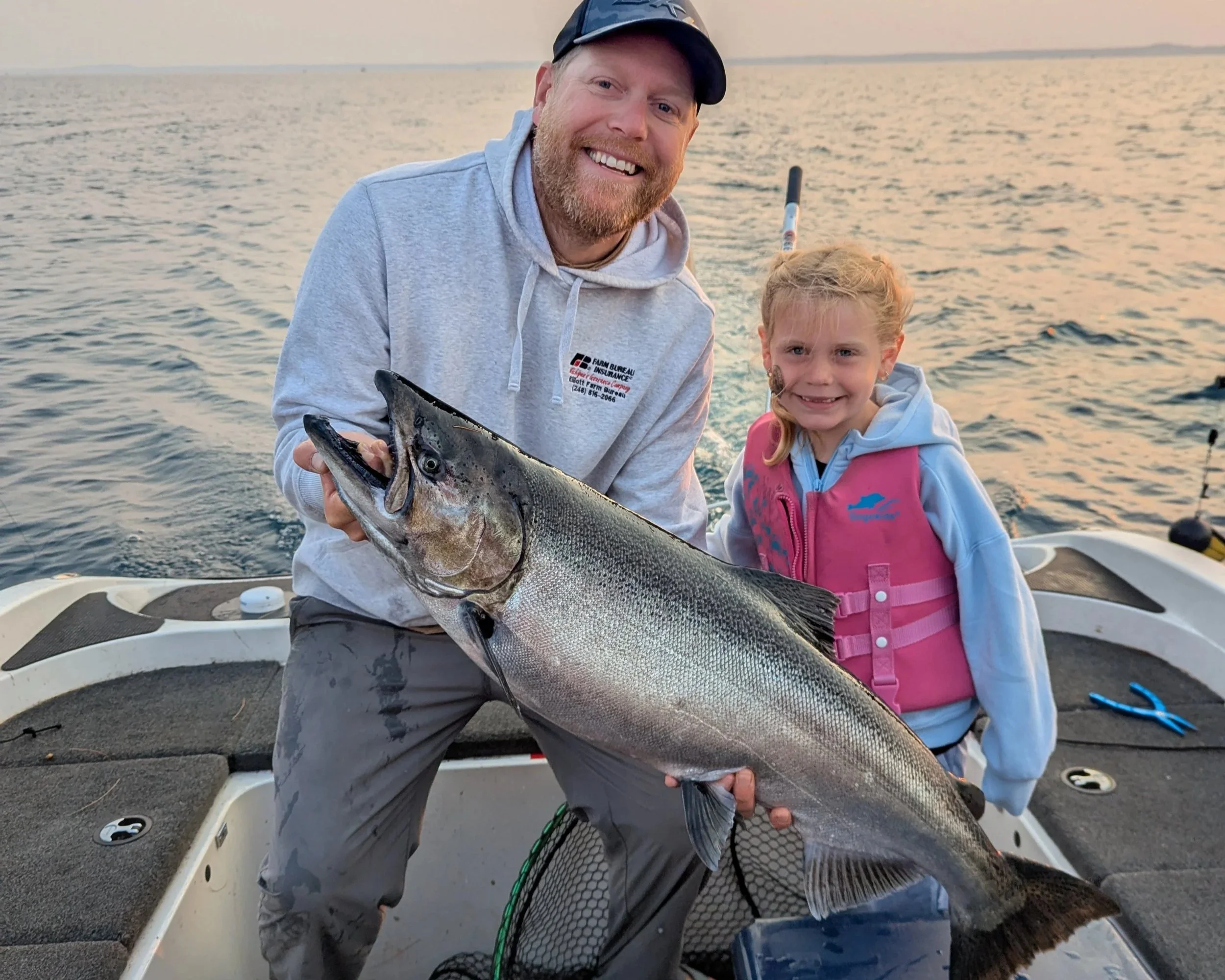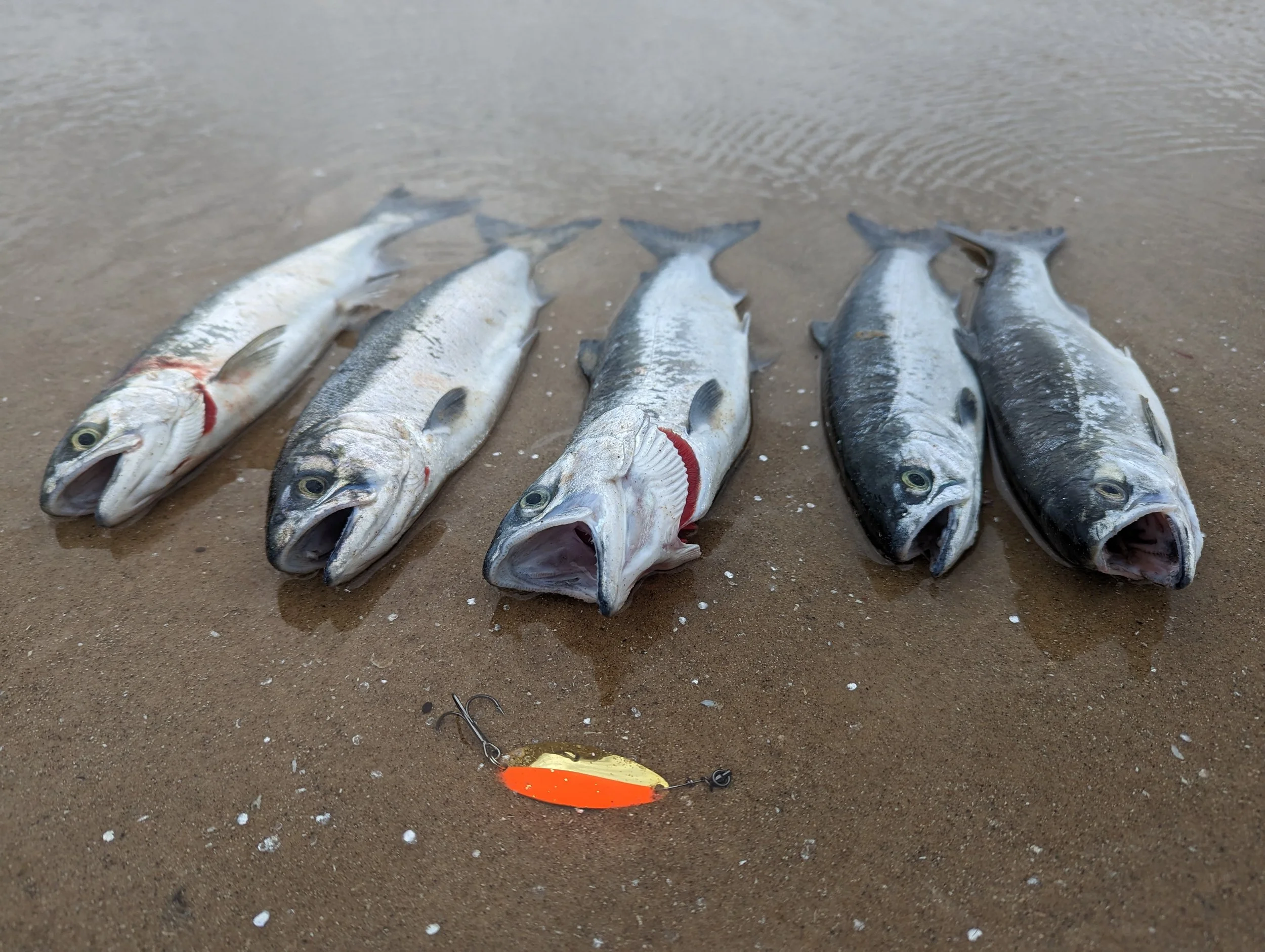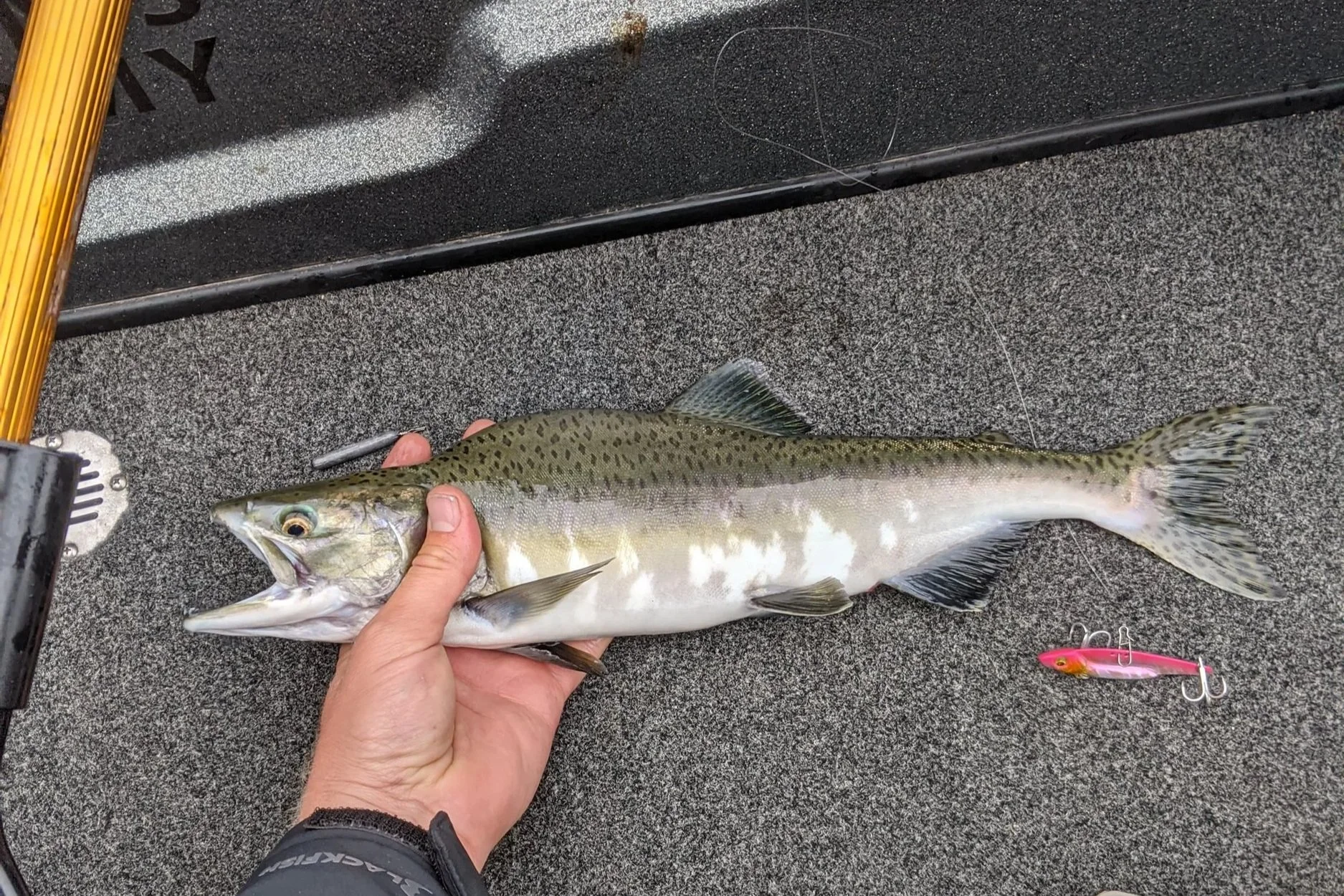History of Trout and Salmon In The Great Lakes - Part 1 - The Salmon
As someone who has a passion for the Great Lakes fishery and a biologist. I feel like some of the background information on how we got to the current status of the fishery is important. I’m also guessing that this might be new information for a lot people who fish the Great Lakes. This is a much different fishery today than it was historically. This list isn’t meant to be a deep dive into each species and how they function in the Great Lakes but more of an introduction. I also know that brook trout and lake trout are technically a char species vs a true trout. I just want to have a central place that the average person can find out some background information on the Great Lakes. You’ll likely be surprised by just how many of our popular coldwater Great Lakes species are non native.
Chinook or King Salmon (Oncorhynchus tshawytscha) - This has to be the most iconic of all the Great Lakes Species. They get big, fight hard, and power the fishing industry here on Lake Michigan. Who doesn’t want to reel in one of those “20 pound” summer kings on the big lake? The Pacific salmon species (kings and cohos) are probably one of the most successful fisheries introductions in the history of the world. That historic introduction was made in 1967 by the Michigan DNR with a primary objective to suppress alewife numbers in the Lake. It would become a much bigger deal than that and in modern times a significant chunk of the estimated 5.1 billion dollar Great Lakes Fishery can be contributed to kings. It is interesting to note that between 1873 and 1933 and estimated 11 million chinook were planted in the Great Lakes. However it wasn’t until that introduction in 1967 and the arrival of the alewives that they were able to prosper. Lake Michigan and Lake Ontario are the most famous chinook fisheries with Lake Huron and Lake Superior supporting some kings too. There is a lot of natural reproduction in the current fishery with big numbers of wild fish coming out of some West Michigan tributaries.
Chinook Salmon - Lake Michigan
Coho Salmon (Oncorhynchus kisutch) - The other highly sought after Pacific salmon species and the best tasting variety in the Great Lakes. They don’t get as big as chinooks, but they still drive the fishery at certain times of the year. If you have followed along with salmon fishing at all then you are aware of the spring fishery on Lake Michigan. Coho fever starts down at the far southern end of the lake and then creeps northward as the water warms. Lake Huron and Lake superior also have some good localized coho fisheries. I also see them turning up in places like the St. Clair River. They were the first pacific salmon species to be stocked for the purpose of suppressing alewives and that happened in 1966. In present times one of the original planting sites the Platte River still gets the biggest run of coho. Platte Bay can offer some incredible fishing for staging coho’s and is one thing I have yet to experience.
Coho Salmon - Lake Michigan
Pink Salmon (Oncorhynchus gorbuscha) - The accidental salmon of the Great Lakes. It is widely accepted that there were multiple introductions of fish. They were intitally raised at the Port Arthur Hatchery in Thunder Bay Ontario (Lake Superior). These fish were destined for a stocking in Hudson Bay. However there were about 100 escapees when transferring fish to a sea plane for stocking in Hudson Bay another 350 put in by Pie Island in Lake Superior. The biggest an likely most successful involved 21,000 fish were discarded into a sewer that flows into the Current River in Thunder Bay Ontario. All these hatchery fish accidentally made it in as fingerlings and the odds were stacked against them. Somehow they found a way and are now present in Lake Superior, Michigan, and Huron. The St. Mary’s River gets the biggest run of pinks and typically in odd numbered years, fish can be caught in even numbered years too but historically not as many. There are other fisheries in the world where pinks are literally taking over and out competing more desirable salmon (they are ranked lower as table fare). It will be interesting to see if they start becoming more of a factor in the the Great Lakes salmon fishery. It is important to not that pinks in the Great Lakes are self sustaining with no stocking other than the initial introduction.
Male Pink Salmon - St. Marys River
Atlantic Salmon (Salmo salar) - Atlantics were there only salmon native the to Great Lakes and only in Lake Ontario. Dams and environmental conditions put a stop to reproduction and they were extirpated from the lake. Hatchery fish have been reintroduced into Ontario and Michigan made their first stocking in 1972. The St. Marys River, Lake Huron, and the St. Clair River are the most well known fisheries in Michigan. Although not a Great Lake you can also target Atlantics in Torch Lake. Odds are low that you will encounter them anywhere else in Michigan, but you never know what will turn up on connected waters. It is one species that I have yet to catch. An interesting fact about atlantics is that they can spawn multiple times vs certain death like a pacific salmon species. They are supposed to be great fighters and must taste good too. A lot of the salmon you see at a grocery store is farmed atlantic salmon.
Atlantic Salmon From St. Marys River - Captured During LSSU Fisheries Class
Others - Biologists tried all sorts of stuff way back in the day, this report from the GLFC has all sorts of interesting introductions. The masu salmon (Oncorhynchus masou) from Japan was one such fish. Individuals were stocked in to a Lake Michigan trib in 1929 and failed to establish. Kokanee (Oncorhynchus nerka) which are a land locked sockeye salmon were planted in Lake Ontario in 1950. Then in the 60’s and 70’s Ontario tried hard to establish a population in Lake Huron. They actually did get some returns for awhile but the program was suspended. One unique thing about kokanee is that they primarily feed on zooplankton.






